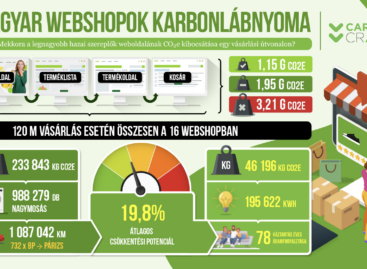GKI analysis: Growing budget
When submitting next year’s budget, it is worth reviewing how much the Government has spent from taxpayers’ and creditors’ money over the past 14 years and on what. In agreement with the government’s communication of the past period, which determines the value of expenditures in relation to 2010 (in order to get really big numbers), it is indeed important to review budget expenditures, but not in nominal terms, but in real prices and through expenditure ratios.
The amount of control over the spending of state bodies (central government, local governments, social security) is illustrated by the proportional value of public finances to GDP. The ratio increased slowly until 2015, then decreased during the global economic boom, until the Covid crisis. At that time, it naturally increased and remained at this level (49-51%). A similar trend in the change in the ratio can be observed in the case of the V3 and Central and Eastern European countries. However, the Hungarian state has spent 3-8 percentage points more than other countries in the region in proportion to GDP every year.
Another important change in the past 14 years is the increase in the share of the central budget within the public finances (2010: 67%, 2023: 79%)! The increasing centralization of government functions (taking away education and healthcare institutions from local governments), as well as the resources withdrawn from local governments, and the transformation of the pension system (inflation tracking instead of mixed indexation) have all contributed to this increase. In light of this trend (the weight of local governments within the public finances has decreased from 25% to 12%), it is not surprising that local governments do not have sufficient resources to implement investments.
Annual budget deficit as a percentage of GDP, 2010-2023
The amount of control over spending by state bodies (central government, local governments, social security) is illustrated by the proportional value of the public budget to GDP. The ratio increased slowly until 2015, then decreased during the global economic boom until the Covid crisis. At that time, it naturally increased and remained at this level (49-51%). A similar trend in the change in the ratio can be observed in the case of the V3 and Central and Eastern European countries. However, the Hungarian state spent 3-8 percentage points more in proportion to GDP each year than the other countries in the region.
Another important change in the past 14 years is the increase in the proportion of the central budget within the public budget (2010: 67%, 2023: 79%)! The increasing centralization of government functions (taking away education and health institutions from local governments), as well as the resources withdrawn from local governments, and the transformation of the pension system (inflation tracking instead of mixed indexation) all contributed to this growth. In light of this trend (the weight of local governments within the public finances has decreased from 25% to 12%), it is not surprising that local governments do not have sufficient resources to implement investments.
Related news
Ministry of Agriculture supports the food industry’s adaptation to new challenges
🎧 Hallgasd a cikket: Lejátszás Szünet Folytatás Leállítás Nyelv: Auto…
Read more >Perceived price increase index remains high
🎧 Hallgasd a cikket: Lejátszás Szünet Folytatás Leállítás Nyelv: Auto…
Read more >Companies are getting tired, individual entrepreneurs are getting stronger – October company trend in light of the new tax package
🎧 Hallgasd a cikket: Lejátszás Szünet Folytatás Leállítás Nyelv: Auto…
Read more >Related news
Investment dumping is coming in the food industry
🎧 Hallgasd a cikket: Lejátszás Szünet Folytatás Leállítás Nyelv: Auto…
Read more >It turns out which online food ordering platform websites are the most sustainable
🎧 Hallgasd a cikket: Lejátszás Szünet Folytatás Leállítás Nyelv: Auto…
Read more >Customers are also looking for the record-breaking iPhones in refurbished versions
🎧 Hallgasd a cikket: Lejátszás Szünet Folytatás Leállítás Nyelv: Auto…
Read more >






